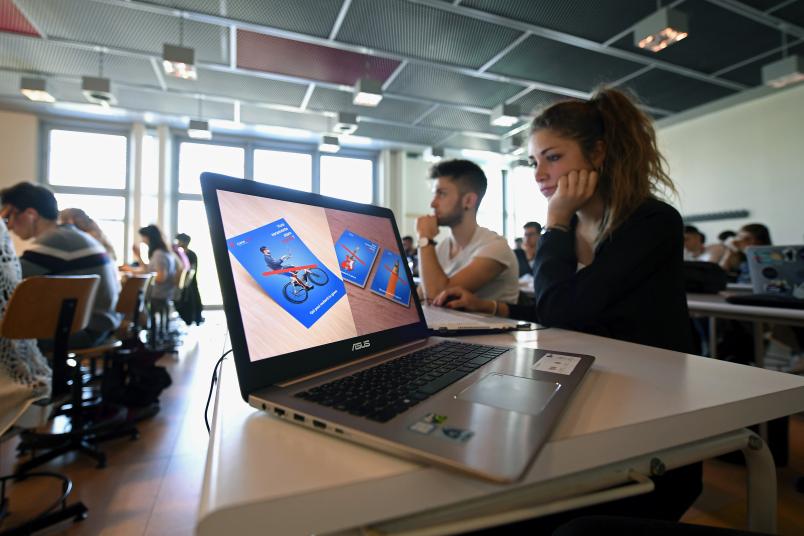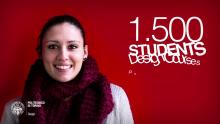The main learning areas on which the courses focus concern:
- humanities, economics and management: an area that brings together disciplines such as history of architecture, history of design, history of visual communication, anthropology, ergonomics, writing techniques, psychology, marketing, economics, management;
- technology and engineering: an area that includes disciplines such as statics, computer science, materials science, mechanical engineering, technical physics;
- the methodology and culture of the project: an area that covers from the methodology and culture of the project up to the most peculiar in-depth analysis insights into art direction, social design, cultural heritage, exhibit design, entrepreneurship and digital retail;
- the representation and modeling of the project: an area that concerns knowledge and skills related to how a project is represented, real and virtual modeling, how it is photographed, up to virtual models for production;
- the sustainability of the project: an area that concerns the chemical sustainability of processes and materials and the environmental requirements of the product.
Moreover, the Bachelor's degree programme includes a focus on new behaviours and the meaning of production processes in relation to the following cross-disciplinary topics:
- Environmental Sustainability: the prerequisite of every design and production activity, to be developed according to eco-design guidelines both by the product designer and the communication designer.
- Social: a key issue for the Piedmont region that, in recent years, has distinguished the training offered by this degree programme. The design skills in this area are recognised at a professional and economic level; this is demonstrated by the collaborations with many organisations, both for- and non-profit, that are concerned with community development, educational projects and social inclusion to benefit vulnerable areas and groups of citizens.
- Cultural Heritage: this is a dynamic, multi-disciplinary area in which the figure of the designer is called to act at the level of the product, process, and strategy, through specific skills that relate, for example, to service design, exhibition installation, outdoor design, light design, and communication.
- Digital: an area that covers the skills needed to design complex, digital products, communications interfaces, but also processes linked to the interaction with machines, to digital manufacturing and to making.

The degree programme, entirely Italian-taught, is organised into two teaching blocks with disciplinary laboratories relating to core knowledge and interdisciplinary laboratories concerned with gaining experience in project development. Therefore, you will have the opportunity to learn through teaching that develops in different dimensions, from formal to non-formal to informal teaching. In particular, the following are expected:
- general training: the first year and the first semester of the second year will offer disciplinary laboratories on two-/three-dimensional representation and History and Culture of design. The aim is to optimise disciplinary knowledge once offered in individual courses. In the same way, from the first to the third year, a series of interdisciplinary design laboratories will be held where you will learn to control and manage design methodology, according to increasing degrees of complexity in the design requirements;
- specialized training: after a first, general year and a first design lab in the second year, which is also aimed at all students, you will be invited to choose the path you wish to follow by choosing between product and communication design, when the September teaching load is being organised. These specialized paths last until the third year, during which you will attend specific labs for each of the two paths in the first teaching period, and themed labs in the second teaching period, confronting interdisciplinary design issues consistent with the product and communication specialisations;
- free credits and workshops: these are opportunities to personalize one's training path with transversal knowledge and skills that can be gained by sourcing from a broad, varied offering relating to different disciplinary contexts of courses promoted by the University and, workshops, opportunities in which to discuss with cutting-edge themes and design experiences, in collaboration with organizations and companies from the world of creativity, culture and local economics;
- training internship: this is mandatory and is a chance for you to engage with the world of work through a 300-hour work placement of which 280 hours are spent in companies, at agencies, or in professional studios, that you will choose from more than 400 organisations in the regional and national area. Thanks to this essential experience you will receive continuous support from PoliTO Stage&Job Office that, in collaboration with the degree programme internship board, will support you for information, contacts, and tutoring.
Info: to find out how to participate in the entrance test , to learn more about the Access Rules (TIL) and the knowledge required for the admission test.
- Innovation Design Lab: where design drives innovation for entrepreneurship and sustainability.
- virtuaLAB: the virtuaLAB was born in a complementary way to the Real Models Laboratory with which it interfaces in the reality of the laboratories dedicated to the Course of Studies in Design and Communication since 2001.
- ModLab Arch and ModLab Design are two "making" laboratories, located respectively in the Valentino Castle and the Cittadella Politecnica di Mirafiori; they are multidisciplinary spaces in which activities dedicated to the creation of models for design, architecture, urban planning and visual communication are developed.
- MATto, material library of the degree course in Design and Communication: 1000 materials and semi-finished products of new generation collected and analyzed according to their technical characteristics, their possible sustainable use, the forms of presentation and sensory characteristics in support of local businesses and design courses and students of the Degree Course in Design and Communication.
- Food Design Lab | PoliTO: operational tool of the Fighting Food Waste Design focus (FFWD) project of the Polytechnic of Turin on the themes of food design and food poverty.
- Nudi o Vestiti? archive created to tell the story of packaging and its communicative role through the lens of innovation and sustainability, it is open to students and researchers of the CdS in Design and Communication, of the CdS in Sustainable Design for the Food System, of the CdS-M in Design Systemic and the Master in Eco Packaging Design;
- Graphicus: magazine and laboratory for research and experimentation on communication, aimed at students, researchers, professionals; it is also an archive of books/magazines built over over 100 years of history, available to students and researchers, and supports teaching by guaranteeing the possibility of accessing content, experimenting and acquiring skills in the field of communication.
